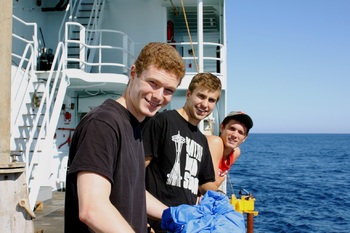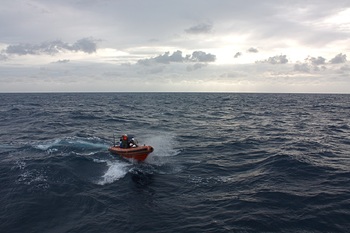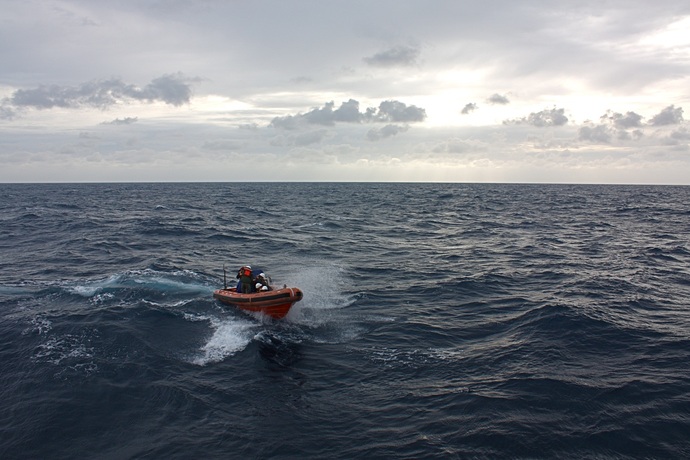The ship is constantly active; at any given hour, you can walk through any room and find somebody up. There’s always something to distract you, something you learn about, or some data being collected. The time flies! Already, we have just over two days left at Axial; it’s amazing how quickly the cruise has gone by.
Watching the ROV roam the seafloor is still fascinating, but we’re past the initial stages of awe checking out the new lava flow and amazing collapse features. Lately we’ve been spending many hours thoroughly creating video documentation of the hydrothermal vents at different vent fields. Lots of sulfury, shiny rocks are being sampled. We’re trying out different sensors like temperature probes and current meters that may some day be permanent seafloor fixtures.
It’s truly evident how novel of a science and process this is. Rock sampling, for example, 1500 meters below the seafloor of new, fragile basalt is incredibly difficult even with the outstanding technologies present with the ROV. Using the ROV’s arms often results in crushing large chunks of basalt—the ease in which they seem to break apart resembles how a cracker might fare encased in those huge manipulators. On many occasions, the crew has resorted to using a vacuum-like device to slurp up the crumbled fragments instead. The hydrothermal vents are tricky to sample too. In some instances, the current created in getting too close results in sturdy-looking structures simply falling over.
And, everyday, I feel so lucky to spend these two weeks surrounded by such a variety of people. Everybody has such unique stories about how they came to this field, and everybody is an expert with so much to teach. Every time I get an enthused explanation by somebody who is clearly passionate about his or her work, I get briefly waylaid imagining myself in that respective field. It’s hard to say where I’ll end up, but it’s inevitable that I’ll pick something where I’ll continue to be able to come on these fantastic cruises.




